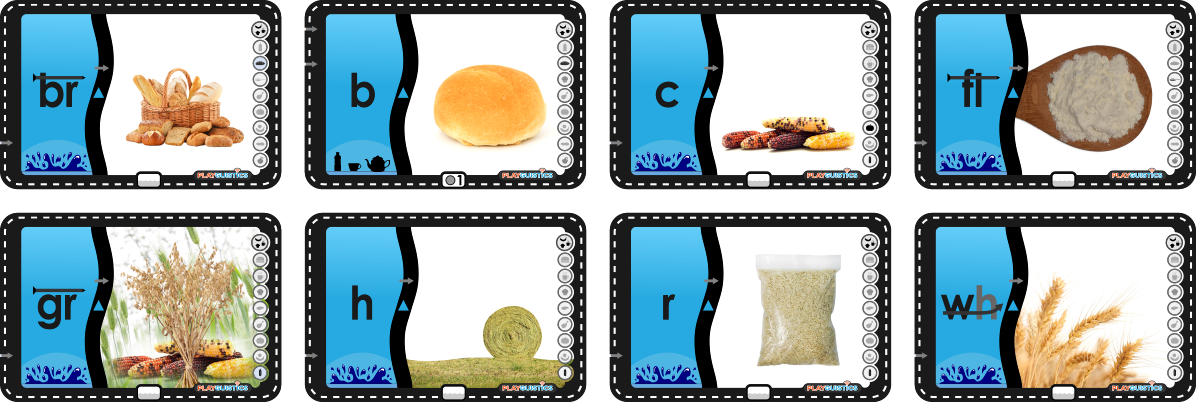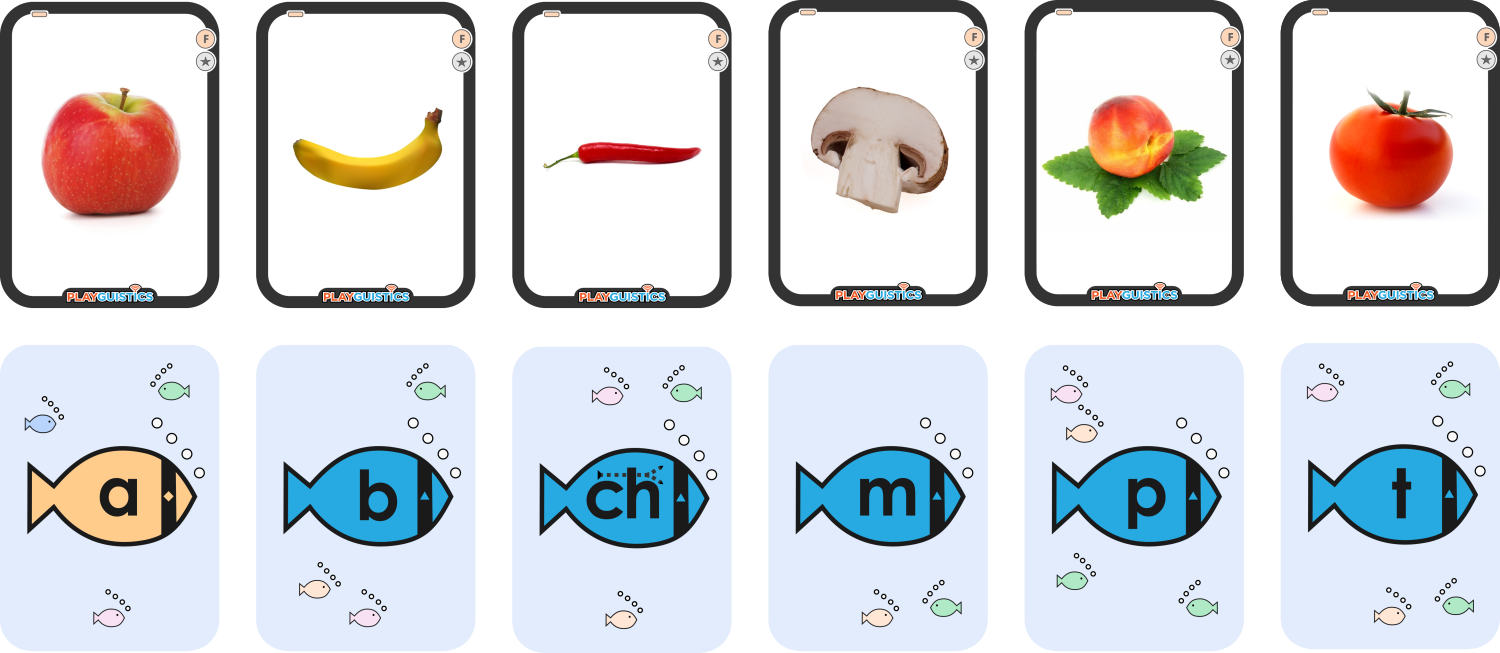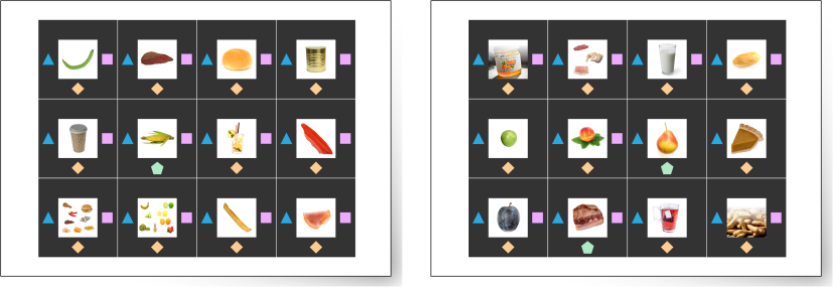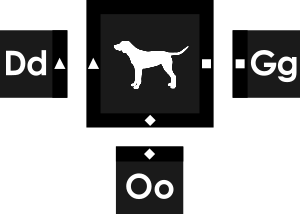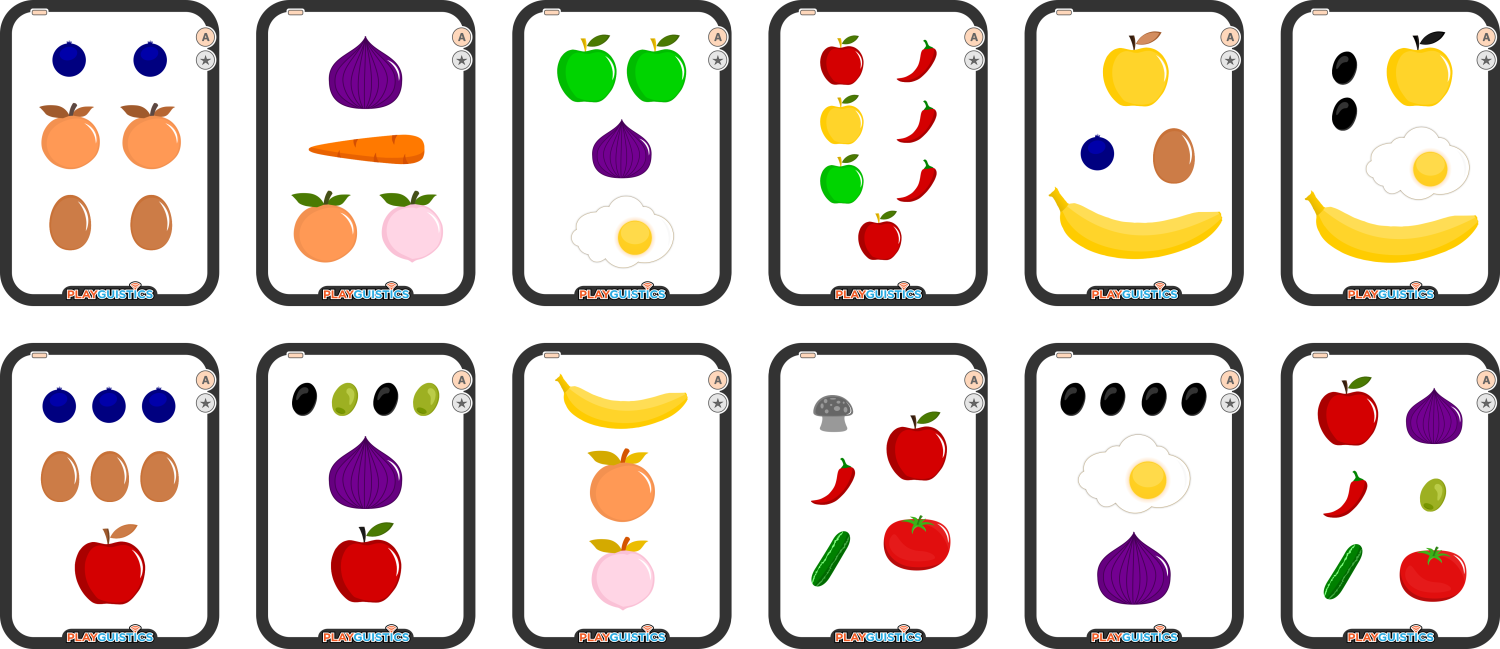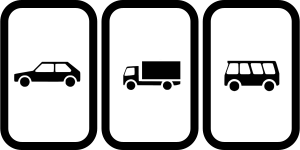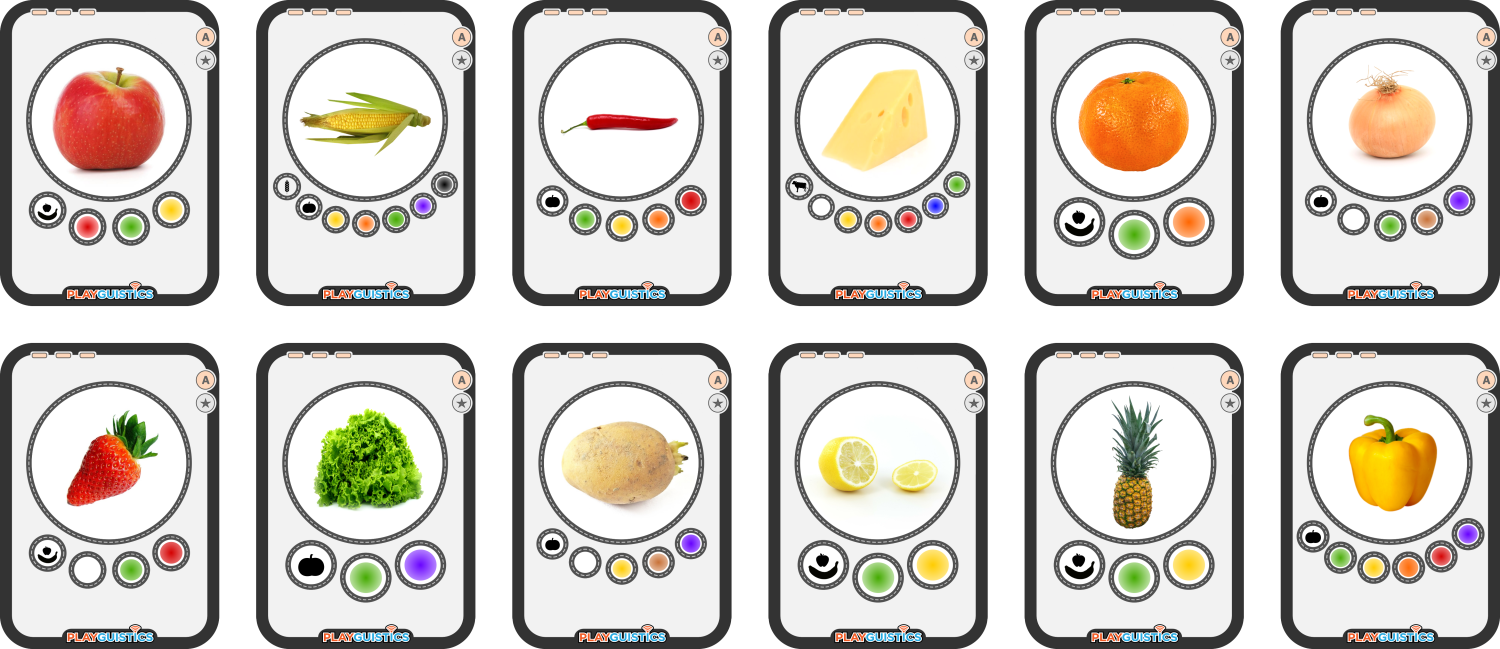Vocabulary Knowledge
|
Learning about food can begin with first learning some relevant vocabulary. Use the Fruit Vocabulary Set from our Vocabulary Flashcards to teach your students vocabulary words for this topic.
Grain & Grain-Based Vocabulary Cards The Grains Vocabulary Set from our Vocabulary Flashcards includes both some basic types of grain and various food products that are produced with a grain as a primary ingredient.
Protein Vocabulary Cards Use the Proteins Vocabulary Set from our Vocabulary Flashcards to teach your students vocabulary words for the most common sources of dietary protein.
Vegetable Vocabulary Cards Use the Vegetables Vocabulary Set from our Vocabulary Flashcards to teach your students vocabulary words for this topic. These vocabulary words are especially suitable for teaching the difference between countable and uncountable nouns. For example, 'lettuce' is an uncountable noun and it is incorrect to say 'lettuces.' Instead, students can be taught to say 'heads of lettuce.'
Food (Other) Vocabulary Cards This Food Vocabulary Set from our Vocabulary Flashcards includes a variety of different food related words, ranging from specific dishes and snacks, to types of cuisine.
|
|
|||
Phonics & Reading Skills
|
Want to simultaneously provide your students with food vocabulary recall practice, while developing their phonics skills? Phonics Fish is the classic card game Go Fish with a special phonics twist! The back of each card has a phonics clue that increase students' likelihood of guessing which of their fellow players has the card they need to form a set -- but only if they've paid attention during their phonics lessons. To play this game, participants take turns using the sentence pattern "Do you have a _________________?" to try to collect a full set of 3 matching cards that they can then lay down on in front of them to score points. This game offers many sets of cards for different learning topics. Phonics Fish Set F is made up of animal vocabulary cards.
|
||||
Another option for simultaneously developing phonics skills while improving food vocabulary recall is to utilize our set of 24 food & beverage Word Tiles. This activity involves matching Phonics Sound Tiles to the sides of various Word Tiles. For example, a student would complete the 'ham' Word Tile by matching a 'h' Sound Tile to the left side of the Word Tile, a 'm' Sound Tile to the right side, and an 'a' Sound Tile to the bottom. Phonics Matching Tiles can be used for a variety of teaching demonstrations and various practice activities and friendly competitions. The set of 24 food & beverage tiles has its own individual downloadable print file.
|
|
|||
Speaking Activities & Games
|
The Food Card Game is an easy-to-learn and easy-to-play game suitable for English beginners. It provides the opportunity for participants to get repeated practice using common food vocabulary words while having fun play a mildly competitive game. Played in partner-pairs of two, participants take turns being either the asker and the answerer. The answerer draws a single card from a set of 18 cards (but keeps it secret), while the asker lays out an identical set of 18 cards in front of them. The asker then needs ask a series of simple questions to deduce which of the 18 cards in front of them matches the "secret card" held by the answerer. The sentence pattern "Do you see a _________________?" is used by the asker in this game, with different animals being systematically inserted into the blank. After using this sentence pattern to ask a question, based on the answerer's response, the asker can flip any cards that CAN'T be a match to the "secret card" face-down, until only one animal card remains face up.
|
|
|||
|
The Colors & Nutrition Card Game allows students to practice categorizing foods by their nutritional categories and the colors that they could be. Although recommended for intermediate to advanced English language students who need to develop more complex vocabulary knowledge, this card game is an easy-to-learn and easy-to-play game suitable for learners aged 6 and older. Played in partner-pairs of two, participants take turns being either the asker and the answerer. The answerer draws a single card from a set of 27 cards (but keeps it secret), while the asker lays out an identical set of 27 cards in front of them. The asker then needs ask a series of simple questions to deduce which of the 27 cards in front of them matches the "secret card" held by the answerer. The asker can use sentence patterns like:
After using this sentence pattern to ask a question, based on the answerer's response, the asker can flip any cards that CAN'T be a match to the "secret card" face-down, until only one nutrition card remains face up.
|
|
|||
|
No, we're not suggesting that pets should be used as food. Petshops do sell pet food, however, and our series of printable petshop role-play props will allow students to practice shopping for the right food for their pets. The Petshop Role-Play kit series makes it easy to make various petshop animals and products from of cardstock. All that is required is use of a color printer and some simple cutting and gluing.
|
|
|||
|
Students can use materials from the Fast-Food Role-Play kit series to practice a wide range of food related vocabulary. The included vocabulary words range from specific produce ingredients (apple, lettuce, onion) to various cooked products (hamburgers, pizzas). Like the Petshop Role-Play kit above, constructing this role-play prop series only requires a some printer-friendly cardstock, and a little straightforward printing, cutting, and gluing.
|
|
|||

